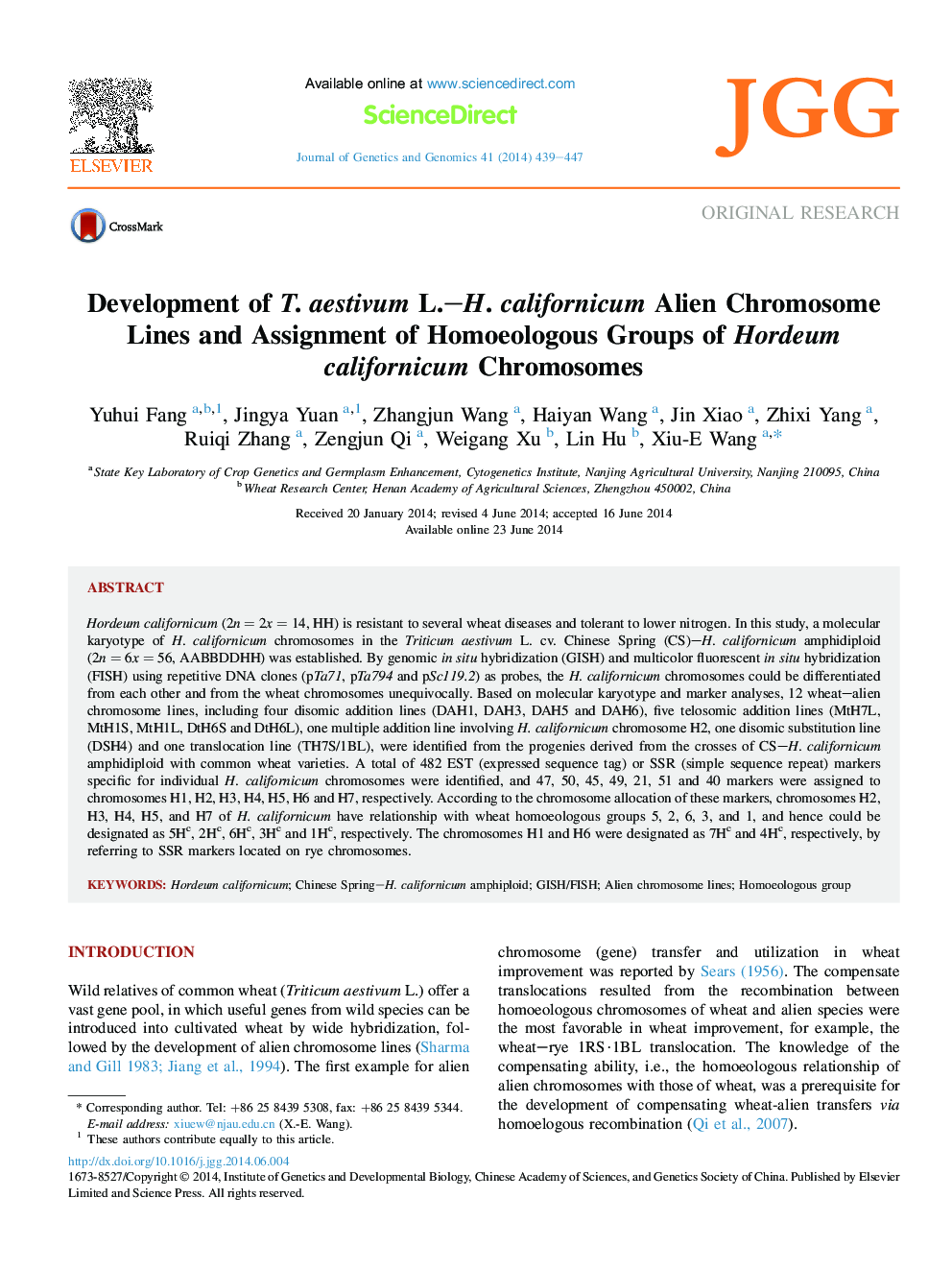| Article ID | Journal | Published Year | Pages | File Type |
|---|---|---|---|---|
| 2787276 | Journal of Genetics and Genomics | 2014 | 9 Pages |
Hordeum californicum (2n = 2x = 14, HH) is resistant to several wheat diseases and tolerant to lower nitrogen. In this study, a molecular karyotype of H. californicum chromosomes in the Triticum aestivum L. cv. Chinese Spring (CS)–H. californicum amphidiploid (2n = 6x = 56, AABBDDHH) was established. By genomic in situ hybridization (GISH) and multicolor fluorescent in situ hybridization (FISH) using repetitive DNA clones (pTa71, pTa794 and pSc119.2) as probes, the H. californicum chromosomes could be differentiated from each other and from the wheat chromosomes unequivocally. Based on molecular karyotype and marker analyses, 12 wheat–alien chromosome lines, including four disomic addition lines (DAH1, DAH3, DAH5 and DAH6), five telosomic addition lines (MtH7L, MtH1S, MtH1L, DtH6S and DtH6L), one multiple addition line involving H. californicum chromosome H2, one disomic substitution line (DSH4) and one translocation line (TH7S/1BL), were identified from the progenies derived from the crosses of CS–H. californicum amphidiploid with common wheat varieties. A total of 482 EST (expressed sequence tag) or SSR (simple sequence repeat) markers specific for individual H. californicum chromosomes were identified, and 47, 50, 45, 49, 21, 51 and 40 markers were assigned to chromosomes H1, H2, H3, H4, H5, H6 and H7, respectively. According to the chromosome allocation of these markers, chromosomes H2, H3, H4, H5, and H7 of H. californicum have relationship with wheat homoeologous groups 5, 2, 6, 3, and 1, and hence could be designated as 5Hc, 2Hc, 6Hc, 3Hc and 1Hc, respectively. The chromosomes H1 and H6 were designated as 7Hc and 4Hc, respectively, by referring to SSR markers located on rye chromosomes.
